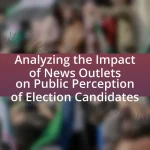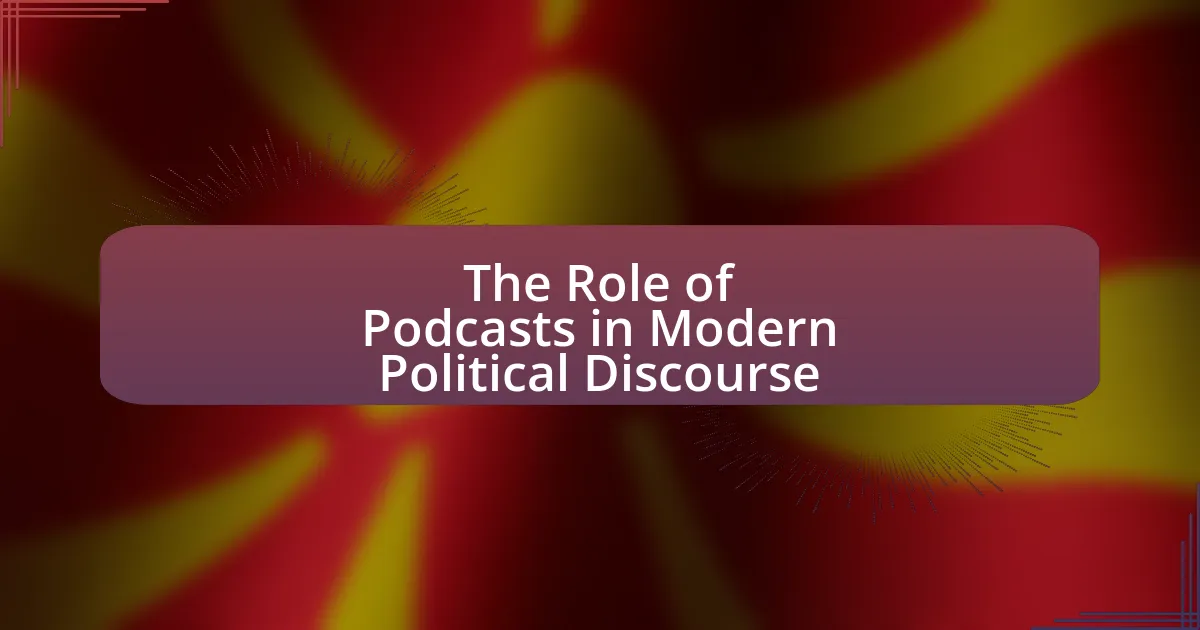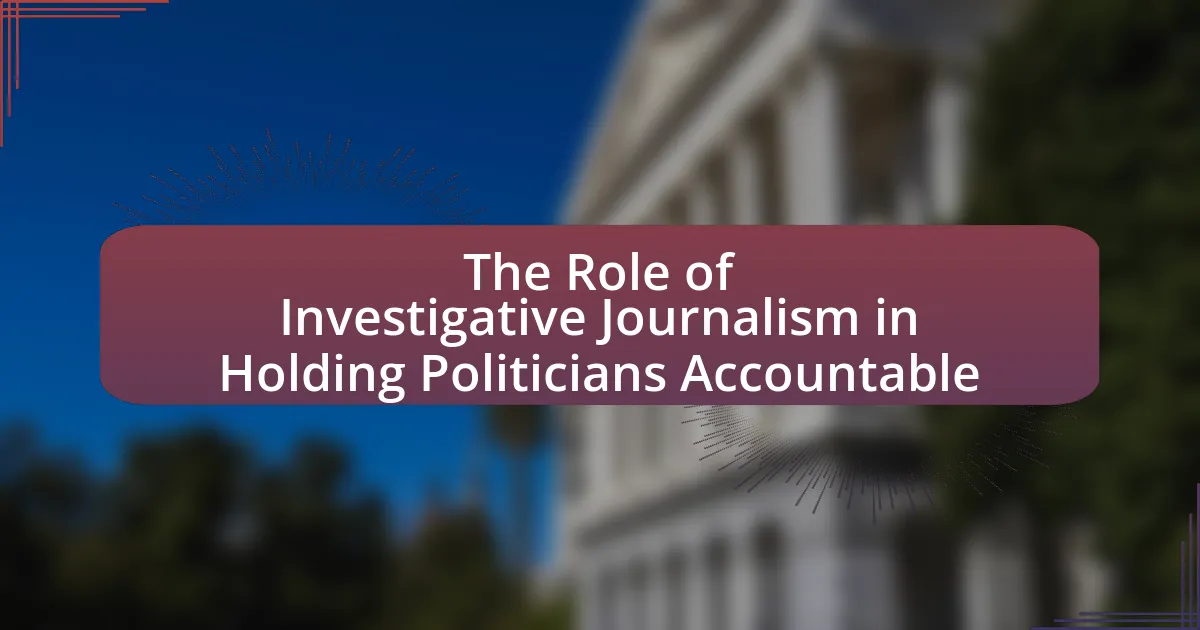Political advertisements play a crucial role in shaping public opinion during elections by influencing voter perceptions of candidates and issues. These ads utilize emotional appeals, persuasive messaging, and targeted demographics to sway attitudes, with research indicating that a significant percentage of voters find them informative and impactful. Key elements of effective political advertisements include messaging, visuals, emotional appeal, and calls to action, all of which work together to enhance voter engagement and turnout. Additionally, the article explores how different demographics respond to advertisements, the ethical considerations surrounding them, and the long-term effects on public opinion and political ideologies. Overall, the analysis highlights the strategies campaigns employ to maximize the effectiveness of their advertisements in a competitive political landscape.
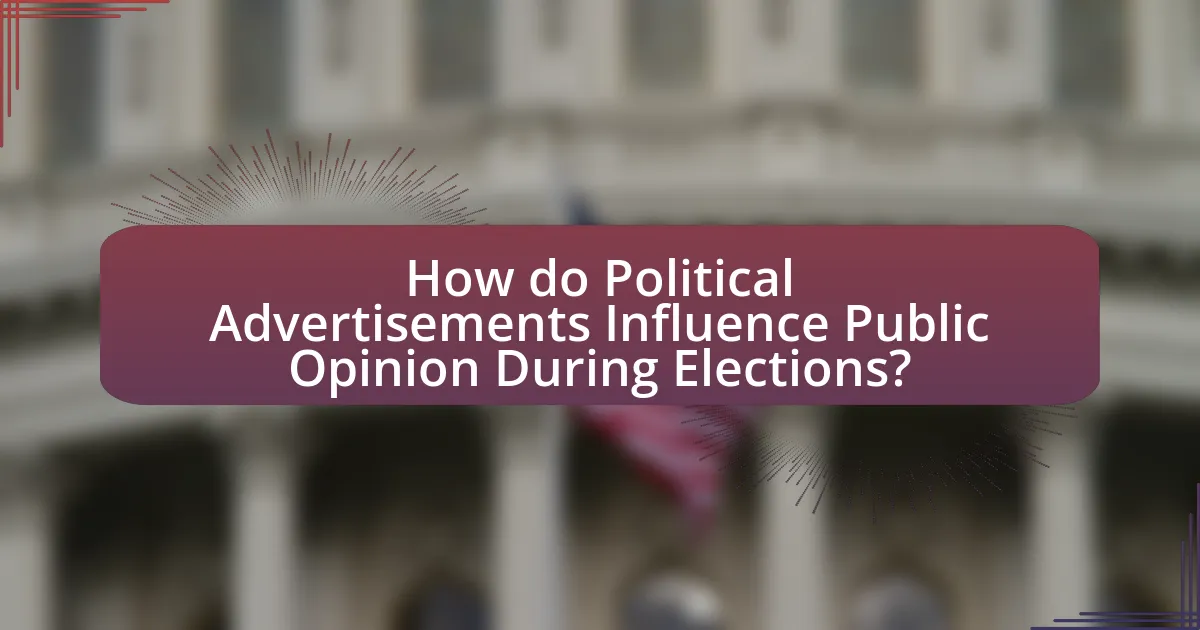
How do Political Advertisements Influence Public Opinion During Elections?
Political advertisements significantly influence public opinion during elections by shaping perceptions of candidates and issues. These advertisements utilize emotional appeals, persuasive messaging, and targeted demographics to sway voter attitudes. Research indicates that exposure to political ads can lead to increased voter awareness and engagement, as well as shifts in candidate favorability. For instance, a study by the Pew Research Center found that 62% of voters reported that political ads helped them learn about candidates’ positions. Additionally, the effectiveness of these advertisements is often amplified through social media platforms, where they can reach specific audiences based on interests and behaviors, further reinforcing their impact on public opinion.
What are the key elements of political advertisements?
The key elements of political advertisements include messaging, visuals, target audience, emotional appeal, and call to action. Messaging conveys the candidate’s platform and values, while visuals enhance engagement and retention of information. Target audience identification ensures that the advertisement reaches the intended demographic, maximizing impact. Emotional appeal is crucial as it connects with voters on a personal level, influencing their perceptions and decisions. Finally, a clear call to action encourages voter engagement, prompting them to support the candidate or participate in the electoral process. These elements work together to effectively shape public opinion during elections.
How do visuals and messaging in advertisements affect voter perception?
Visuals and messaging in advertisements significantly influence voter perception by shaping emotional responses and framing candidates’ images. Research indicates that advertisements utilizing strong visuals can evoke emotions such as trust or fear, which directly impact voters’ attitudes toward candidates. For instance, a study by the American Political Science Review found that candidates who employed positive imagery and clear messaging were perceived more favorably, leading to increased voter support. Additionally, the framing of issues through specific visuals can alter the way voters interpret political messages, as demonstrated in the 2008 presidential election, where Barack Obama’s use of uplifting visuals contrasted sharply with negative imagery used by opponents, affecting public perception and ultimately voter behavior.
What role does emotional appeal play in political advertising?
Emotional appeal plays a crucial role in political advertising by influencing voter perceptions and decisions. Advertisements that evoke emotions such as fear, hope, or anger can create strong connections between candidates and voters, often swaying opinions and increasing engagement. For instance, research by the American Psychological Association indicates that emotionally charged messages are more likely to be remembered and shared, enhancing their impact on public opinion. This effectiveness is evident in campaigns that utilize storytelling and personal narratives to resonate with voters’ experiences and values, ultimately shaping electoral outcomes.
Why are political advertisements crucial during election campaigns?
Political advertisements are crucial during election campaigns because they significantly influence voter perceptions and decisions. These advertisements serve to inform the electorate about candidates’ positions, policies, and values, thereby shaping public opinion. Research indicates that approximately 70% of voters report that political ads impact their voting choices, highlighting their effectiveness in reaching and persuading potential voters. Furthermore, political ads can create emotional connections and narratives that resonate with the electorate, making them a vital tool for candidates to differentiate themselves in a competitive political landscape.
How do advertisements shape candidate image and reputation?
Advertisements shape candidate image and reputation by strategically presenting information that influences public perception. Political advertisements often highlight a candidate’s strengths, achievements, and values while downplaying weaknesses or controversies. For instance, a study by the Pew Research Center found that 62% of voters reported that campaign ads significantly impacted their views on candidates. This influence is achieved through emotional appeals, persuasive messaging, and targeted demographics, which create a favorable or unfavorable image in the minds of voters. Consequently, the portrayal of candidates in advertisements can lead to shifts in public opinion, ultimately affecting election outcomes.
What impact do advertisements have on voter turnout and engagement?
Advertisements significantly increase voter turnout and engagement by informing and persuading potential voters. Research indicates that targeted political advertisements can enhance awareness of candidates and issues, leading to higher participation rates in elections. For instance, a study by the Pew Research Center found that 60% of voters reported that advertisements influenced their decision to vote, particularly among younger demographics. Additionally, advertisements that effectively communicate a candidate’s message can mobilize supporters, as evidenced by the 2008 Obama campaign, which utilized social media and targeted ads to engage millions of new voters, resulting in a record turnout.
How do different demographics respond to political advertisements?
Different demographics respond to political advertisements in varied ways based on factors such as age, gender, race, and socioeconomic status. For instance, younger voters tend to engage more with digital advertisements and social media campaigns, while older demographics may respond better to traditional media like television. Research indicates that women are more likely to be influenced by emotional appeals in advertisements, whereas men may respond more to factual information and statistics. Additionally, racial and ethnic minorities often resonate with messages that reflect their specific cultural values and experiences. A study by the Pew Research Center found that targeted advertisements can significantly increase voter turnout among specific demographic groups, highlighting the importance of tailoring messages to resonate with diverse audiences.
What factors influence the effectiveness of advertisements among various age groups?
The effectiveness of advertisements among various age groups is influenced by factors such as media consumption habits, cognitive processing styles, and emotional resonance. Younger audiences tend to engage more with digital platforms, making social media advertising more effective for them, while older demographics may respond better to traditional media like television. Research indicates that cognitive processing varies by age; younger individuals often prefer fast-paced, visually engaging content, while older adults may favor detailed, informative messages. Additionally, emotional resonance plays a crucial role; advertisements that evoke nostalgia may be more effective for older viewers, while those that highlight innovation and trends resonate with younger audiences. These factors collectively shape how different age groups perceive and respond to advertisements, impacting their overall effectiveness.
How do cultural backgrounds affect the reception of political messages?
Cultural backgrounds significantly influence the reception of political messages by shaping individuals’ values, beliefs, and interpretations of information. For instance, research indicates that individuals from collectivist cultures may prioritize community-oriented messages, while those from individualistic cultures may respond more favorably to messages emphasizing personal achievement and autonomy. A study by Hofstede (1980) highlights how cultural dimensions, such as individualism versus collectivism, affect communication styles and message interpretation. This suggests that political advertisements tailored to resonate with specific cultural values can enhance their effectiveness, as seen in campaigns that successfully engage diverse demographic groups by aligning their messages with cultural norms and expectations.
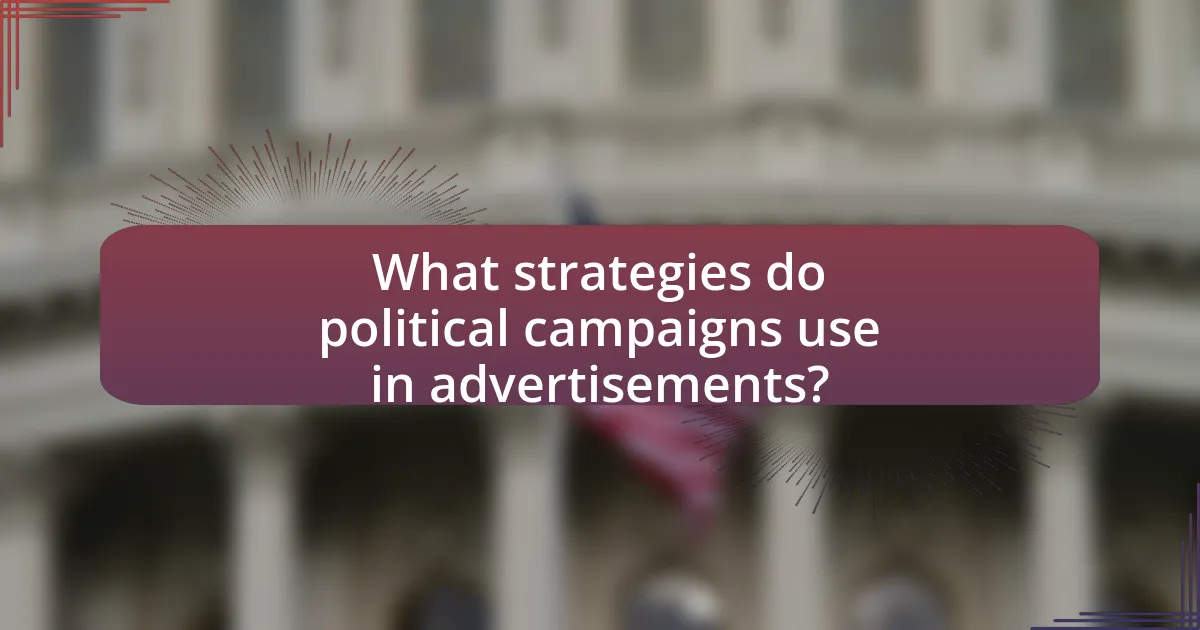
What strategies do political campaigns use in advertisements?
Political campaigns utilize various strategies in advertisements to influence voter perceptions and behaviors. These strategies include emotional appeals, targeting specific demographics, utilizing social media platforms, and employing negative advertising. Emotional appeals, such as fear or hope, are designed to resonate with voters’ feelings, making the message more impactful. Targeting specific demographics allows campaigns to tailor messages that address the unique concerns and interests of different voter groups, enhancing engagement. The use of social media platforms enables campaigns to reach a broader audience quickly and interactively, facilitating real-time feedback and engagement. Negative advertising, which highlights opponents’ weaknesses, can effectively sway public opinion by creating doubt about the rival candidate’s qualifications or integrity. These strategies are supported by research indicating that emotional and targeted messaging significantly affects voter decision-making processes.
How do campaigns tailor advertisements to target specific voter segments?
Campaigns tailor advertisements to target specific voter segments by utilizing data analytics and demographic research to identify the preferences and concerns of different groups. For instance, campaigns analyze voter data from sources like the U.S. Census Bureau and polling organizations to segment the electorate based on factors such as age, income, education, and geographic location. This targeted approach allows campaigns to craft messages that resonate with each segment’s unique values and issues, such as focusing on healthcare for older voters or job creation for younger voters. Evidence of this strategy can be seen in the 2020 U.S. presidential election, where targeted digital ads were employed to reach specific demographics, resulting in increased engagement and voter turnout among those groups.
What techniques are used to analyze voter data for effective advertising?
Techniques used to analyze voter data for effective advertising include data mining, predictive analytics, and segmentation analysis. Data mining involves extracting patterns from large datasets to identify voter preferences and behaviors. Predictive analytics uses statistical algorithms and machine learning to forecast future voting behaviors based on historical data. Segmentation analysis categorizes voters into distinct groups based on demographics, psychographics, and voting history, allowing for targeted messaging. These techniques enable campaigns to tailor their advertising strategies effectively, enhancing engagement and influencing voter decisions.
How do campaigns utilize social media platforms for advertisement distribution?
Campaigns utilize social media platforms for advertisement distribution by creating targeted ads that reach specific demographics based on user data. These platforms, such as Facebook, Twitter, and Instagram, allow campaigns to segment audiences by age, location, interests, and behaviors, enabling precise targeting. For instance, a study by the Pew Research Center found that 69% of adults in the U.S. use Facebook, making it a prime platform for political ads aimed at a broad audience. Additionally, social media facilitates real-time engagement, allowing campaigns to respond to public sentiment and adjust their messaging accordingly. This dynamic interaction enhances the effectiveness of advertisements, as evidenced by the significant increase in voter engagement during the 2020 U.S. elections, where social media played a crucial role in shaping public opinion.
What are the ethical considerations in political advertising?
Ethical considerations in political advertising include truthfulness, transparency, and the potential for manipulation. Political advertisements must accurately represent candidates and their positions to avoid misleading voters, as false claims can distort public perception and undermine democratic processes. Transparency about funding sources is crucial, as undisclosed financial backers can influence the message and create conflicts of interest. Additionally, the use of emotional appeals and fear tactics raises ethical concerns regarding manipulation, as these strategies can exploit vulnerabilities and lead to uninformed decision-making among voters. Research indicates that misleading political ads can significantly impact voter behavior, highlighting the importance of ethical standards in maintaining the integrity of electoral processes.
How do misleading advertisements impact public trust in politics?
Misleading advertisements significantly erode public trust in politics by creating skepticism about the integrity of political messages and candidates. When voters encounter false or exaggerated claims, they may question the credibility of not only the specific advertisement but also the political system as a whole. Research from the Pew Research Center indicates that 70% of Americans believe that misleading information in political advertising undermines their confidence in elected officials. This decline in trust can lead to voter apathy, decreased political engagement, and a belief that all politicians are dishonest, further complicating the democratic process.
What regulations govern political advertising practices?
Political advertising practices are primarily governed by the Federal Election Commission (FEC) regulations in the United States. These regulations require disclosure of funding sources for political ads, mandate that advertisements include a “paid for by” statement, and impose limits on contributions and expenditures related to political campaigns. Additionally, the Bipartisan Campaign Reform Act (BCRA) of 2002 further regulates the financing of political advertisements, particularly those that air close to elections, by restricting the use of corporate and union funds. These regulations aim to promote transparency and prevent corruption in the electoral process.

What are the long-term effects of political advertisements on public opinion?
Political advertisements have significant long-term effects on public opinion by shaping perceptions, influencing voter behavior, and reinforcing party identification. Research indicates that repeated exposure to political ads can lead to increased familiarity and positive attitudes toward candidates, which can persist beyond the election period. For instance, a study by the Pew Research Center found that individuals who were frequently exposed to campaign ads were more likely to develop favorable views of the candidates featured, even months after the campaign ended. Additionally, political ads can create lasting narratives that frame issues in specific ways, affecting how voters interpret political information and make decisions in future elections. This phenomenon is supported by findings from the American Political Science Review, which highlight that the emotional and cognitive responses elicited by political advertisements can solidify partisan loyalties and influence electoral outcomes over time.
How do advertisements influence voter behavior beyond elections?
Advertisements influence voter behavior beyond elections by shaping public perceptions and attitudes towards political issues and candidates. This influence persists as advertisements often reinforce or alter existing beliefs, leading to long-term changes in voter engagement and political discourse. For instance, studies have shown that political advertisements can create lasting impressions, with research indicating that exposure to campaign messages can affect voter opinions even years after the election cycle has ended. A notable example is the 2004 U.S. presidential election, where advertisements not only impacted immediate voting behavior but also influenced public opinion on key issues like the Iraq War long after the election concluded.
What role do advertisements play in shaping political ideologies over time?
Advertisements play a crucial role in shaping political ideologies over time by influencing public perception and framing political narratives. Through targeted messaging, advertisements can reinforce existing beliefs or introduce new ideas, effectively swaying voter opinions and behaviors. For instance, during the 1964 U.S. presidential election, the “Daisy” ad utilized emotional appeal to associate the opposing candidate with nuclear war, significantly impacting public sentiment and contributing to Lyndon B. Johnson’s landslide victory. This demonstrates how advertisements can not only reflect but also actively shape political ideologies by creating associations and emotional responses that resonate with voters.
How can repeated exposure to political messages alter public perception?
Repeated exposure to political messages can significantly alter public perception by reinforcing specific narratives and shaping attitudes toward candidates or policies. This phenomenon occurs through mechanisms such as the mere exposure effect, where familiarity with a message increases its likability and acceptance. Research indicates that individuals who encounter the same political messages multiple times are more likely to adopt the viewpoints presented, as demonstrated in studies like the one conducted by the Pew Research Center, which found that consistent messaging can lead to increased support for political candidates by up to 20%. Additionally, repeated exposure can create a sense of urgency or importance around certain issues, further influencing public opinion and voter behavior during elections.
What lessons can be learned from past political advertising campaigns?
Past political advertising campaigns reveal several key lessons about effective communication and voter engagement. Firstly, emotional appeal significantly influences voter behavior; campaigns that evoke strong emotions, such as fear or hope, tend to resonate more with the electorate. For example, the 2004 “Winds of Change” ad for George W. Bush effectively utilized fear of terrorism to sway undecided voters.
Secondly, targeting specific demographics enhances campaign effectiveness. The Obama campaign in 2008 successfully used data analytics to tailor messages to different voter segments, resulting in increased voter turnout among young and minority populations.
Additionally, authenticity and relatability in messaging foster trust. The 2016 campaign of Bernie Sanders emphasized grassroots support and personal stories, which helped him connect with voters seeking genuine representation.
Finally, the impact of social media cannot be overstated; campaigns that leverage platforms like Facebook and Twitter can reach wider audiences quickly and engage in real-time conversations, as seen in the 2016 election cycle.
These lessons underscore the importance of emotional resonance, targeted messaging, authenticity, and digital engagement in shaping public opinion through political advertising.
What successful strategies have emerged from historical political advertisements?
Successful strategies that have emerged from historical political advertisements include emotional appeal, targeted messaging, and the use of visual imagery. Emotional appeal has been effective in connecting with voters on a personal level, as seen in the “Daisy” ad from Lyndon B. Johnson’s 1964 campaign, which evoked fear and urgency regarding nuclear war. Targeted messaging, exemplified by Barack Obama’s 2008 campaign, utilized data analytics to tailor advertisements to specific demographics, increasing voter engagement. Additionally, visual imagery has played a crucial role; for instance, Ronald Reagan’s 1984 “Morning in America” ad created a positive and hopeful narrative that resonated with voters, contributing to his landslide victory. These strategies demonstrate how historical political advertisements have successfully shaped public opinion during elections.
How can future campaigns improve their advertising effectiveness?
Future campaigns can improve their advertising effectiveness by leveraging data analytics to target specific demographics more accurately. By utilizing advanced analytics, campaigns can identify voter preferences and behaviors, allowing for tailored messaging that resonates with distinct audience segments. For instance, a study by the Pew Research Center found that targeted ads can increase engagement rates by up to 50%, demonstrating the impact of precise audience targeting on campaign success. Additionally, incorporating A/B testing for different ad formats and messages can provide insights into what resonates best with voters, further enhancing effectiveness.
What best practices should campaigns follow for effective political advertising?
Campaigns should focus on targeted messaging, transparency, and data-driven strategies for effective political advertising. Targeted messaging ensures that advertisements resonate with specific voter demographics, increasing engagement and relevance. Transparency builds trust with the electorate, as campaigns that disclose funding sources and ad placements are perceived as more credible. Data-driven strategies, supported by analytics, allow campaigns to optimize ad placements and content based on voter behavior and preferences, enhancing the overall impact. Research indicates that campaigns employing these best practices can significantly improve voter recall and influence public opinion, as evidenced by the success of targeted ads in the 2020 U.S. presidential election, where tailored messaging led to higher engagement rates among key demographics.

